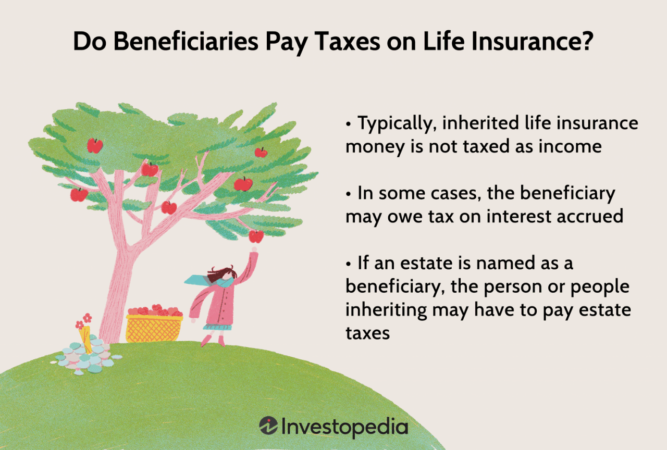
Can you have 2 life insurance policies in Australia? The answer is yes, you can. In fact, many Australians choose to have multiple life insurance policies to meet their unique financial needs and provide comprehensive protection for their loved ones.
This article explores the intricacies of holding multiple life insurance policies in Australia, covering everything from eligibility requirements to the benefits and drawbacks. We’ll delve into the different types of policies available, the factors influencing their cost, and the process of claiming benefits. By understanding these key aspects, you can make informed decisions about your life insurance coverage and ensure that you have the right level of protection for your specific circumstances.
Eligibility and Requirements

In Australia, obtaining life insurance involves meeting specific eligibility criteria. These requirements are designed to ensure that individuals who purchase life insurance policies are suitable candidates for coverage.
Pre-Existing Medical Conditions
Life insurance providers carefully assess applicants’ health histories to determine their risk profile. Pre-existing medical conditions can influence eligibility and premium rates. For instance, individuals with chronic illnesses like diabetes or heart conditions may face higher premiums or even be denied coverage altogether.
Age Limits
There are generally age limits for obtaining life insurance in Australia. While specific age restrictions can vary between insurers, most providers offer coverage to individuals within a certain age range. Typically, you can apply for life insurance up to a certain age, usually around 70 or 80, but it’s essential to check with the insurer for their specific policies.
Required Documentation
To apply for life insurance in Australia, you will typically need to provide the following documents:
- Proof of identity, such as a driver’s license or passport.
- Details of your income and employment status.
- Information about your health history, including any pre-existing medical conditions.
- Details of any existing life insurance policies you hold.
Types of Life Insurance Policies
In Australia, you have various life insurance policy options, each catering to different needs and financial situations. Understanding the differences between these policies is crucial for choosing the right one for you.
Types of Life Insurance Policies
There are three main types of life insurance policies available in Australia:
- Term Life Insurance
- Whole Life Insurance
- Endowment Life Insurance
Term Life Insurance
Term life insurance provides coverage for a specific period, typically 10 to 30 years. If you pass away within this term, your beneficiaries will receive a death benefit. However, if you outlive the term, the policy expires, and you receive no payout.
Key Features of Term Life Insurance
- Lower Premiums: Term life insurance premiums are generally lower than whole life or endowment policies because they only cover a specific period.
- Simple Coverage: Term life insurance is straightforward, providing a death benefit if you pass away during the term.
- No Cash Value: Term life insurance policies do not accumulate cash value, meaning there’s no investment component.
Suitability of Term Life Insurance
Term life insurance is suitable for individuals who:
- Need temporary coverage: For example, if you have a young family and need to ensure their financial security in case of your death.
- Have a limited budget: Term life insurance offers affordable coverage for a specific period.
- Prioritize affordability over investment: If you’re looking for the most cost-effective way to protect your loved ones, term life insurance is a good option.
Whole Life Insurance
Whole life insurance provides lifelong coverage, meaning your beneficiaries will receive a death benefit whenever you pass away. These policies also accumulate cash value, which you can borrow against or withdraw in the future.
Key Features of Whole Life Insurance
- Lifelong Coverage: Whole life insurance provides coverage for your entire life, offering peace of mind for your beneficiaries.
- Cash Value Accumulation: A portion of your premium goes towards building cash value, which can be accessed through loans or withdrawals.
- Higher Premiums: Whole life insurance premiums are generally higher than term life insurance due to the lifelong coverage and cash value component.
Suitability of Whole Life Insurance
Whole life insurance is suitable for individuals who:
- Want lifelong coverage: If you desire a policy that will protect your beneficiaries no matter when you pass away, whole life insurance is a good choice.
- Seek a savings component: Whole life insurance can serve as a savings vehicle, allowing you to accumulate cash value over time.
- Have a higher risk tolerance: Whole life insurance premiums are higher, so you need to be comfortable with the cost.
Endowment Life Insurance
Endowment life insurance combines death benefit coverage with a savings component. It pays out a lump sum to your beneficiaries if you pass away during the policy term or to you if you survive the term.
Key Features of Endowment Life Insurance
- Death Benefit Coverage: If you pass away during the policy term, your beneficiaries will receive a lump sum payment.
- Maturity Benefit: If you survive the policy term, you will receive a lump sum payment, which is typically the sum assured plus accumulated interest.
- Higher Premiums: Endowment life insurance premiums are generally higher than term life insurance due to the savings component.
Suitability of Endowment Life Insurance
Endowment life insurance is suitable for individuals who:
- Want a savings and protection plan: Endowment policies offer a combination of death benefit coverage and savings.
- Need a lump sum in the future: If you have a specific financial goal in mind, such as a child’s education or a down payment on a house, endowment life insurance can help you save for it.
- Are comfortable with higher premiums: Endowment policies have higher premiums due to the savings component.
Comparison of Life Insurance Policies
| Policy Type | Death Benefit | Cash Value | Premiums | Suitability |
|—|—|—|—|—|
| Term Life | Coverage for a specific period | None | Lower | Temporary coverage, affordability |
| Whole Life | Lifelong coverage | Accumulates | Higher | Lifelong coverage, savings component |
| Endowment | Coverage for a specific period | Accumulates | Higher | Savings and protection plan, lump sum in the future |
Benefits of Multiple Policies: Can You Have 2 Life Insurance Policies In Australia

Having multiple life insurance policies can offer significant financial security and peace of mind, particularly in complex situations. It allows you to tailor your coverage to your specific needs and circumstances, providing a safety net for various aspects of your life.
Scenarios Where Multiple Policies Are Advantageous
Multiple life insurance policies can be particularly beneficial in various scenarios, offering tailored protection for different aspects of your financial life.
- Covering Different Debts: If you have multiple debts, such as a mortgage, personal loans, and credit card debt, you can allocate separate life insurance policies to cover each debt. This ensures that your loved ones won’t be burdened with these financial obligations in the event of your passing. For instance, you might have a policy specifically for your mortgage, ensuring your family can continue living in their home without facing foreclosure.
- Providing Additional Coverage for Dependents: If you have multiple dependents, such as children and a spouse, you can secure additional coverage for each of them. This ensures that they have financial support for their education, living expenses, and other needs in your absence. For example, you might have a policy specifically for your children’s education, guaranteeing their future education even if you are not around to support them.
- Protecting Business Interests: If you are a business owner, having multiple life insurance policies can protect your business from financial hardship in the event of your death. This could involve policies covering key employees, business loans, or even the business itself.
Examples of Financial Security with Multiple Policies
Multiple life insurance policies can provide financial security for various aspects of life, ensuring your loved ones are financially protected in your absence.
- Family Security: A family with a mortgage, children, and other financial obligations might have multiple life insurance policies. One policy could cover the mortgage, ensuring the family can remain in their home. Another policy could provide income replacement for the surviving spouse, enabling them to maintain their living standard. A third policy could fund the children’s education, ensuring their future is secure.
- Business Continuity: A small business owner with a significant loan might have a life insurance policy covering the loan amount. This ensures the business can repay the loan in the event of the owner’s death, preventing financial distress and potentially allowing the business to continue operating.
Considerations for Multiple Policies
While having multiple life insurance policies can offer benefits, it’s crucial to weigh the potential drawbacks and ensure a comprehensive understanding of your coverage.
Having multiple policies might seem like a good idea, but it can lead to increased premiums, administrative complexity, and potential risks. Therefore, it’s crucial to carefully consider all aspects before making a decision.
Increased Premiums
A key consideration is the potential for increased premiums. Each policy comes with its own set of costs, and having multiple policies means you’ll be paying premiums for each one. This can significantly increase your overall insurance expenses, especially if you have overlapping coverage. It’s essential to evaluate the cost-effectiveness of multiple policies and ensure that the benefits outweigh the financial burden.
Administrative Complexity
Managing multiple policies can be administratively complex. Keeping track of different policy details, renewal dates, and contact information can be challenging. It’s crucial to maintain organized records and ensure that you have easy access to all policy documents.
Potential Risks, Can you have 2 life insurance policies in australia
There are potential risks associated with holding multiple policies. For example, if you have multiple policies with different insurers, you might face difficulties in claiming benefits if you have a claim under multiple policies. It’s important to understand the claims process for each policy and ensure that there are no conflicts or overlapping coverage.
Understanding Policy Terms and Conditions
Understanding the terms and conditions of each policy is crucial. This includes the coverage details, exclusions, and limitations. It’s important to compare the different policies and ensure that they meet your specific needs. This will help you avoid any surprises or potential issues when you need to claim benefits.
Managing Multiple Policies Effectively
- Regular Review: Regularly review your policies to ensure they still meet your needs and that you’re not paying for unnecessary coverage.
- Consolidate Coverage: Consider consolidating your coverage into a single policy if possible. This can simplify administration and potentially reduce premiums.
- Seek Professional Advice: Consult with a financial advisor or insurance broker to get personalized advice on managing multiple policies.
Choosing the Right Policies
Selecting the appropriate life insurance policies requires careful consideration of various factors to ensure you have adequate coverage at a reasonable cost. It’s crucial to strike a balance between your needs, budget, and the available options.
Factors to Consider When Choosing Life Insurance Policies
Choosing the right life insurance policies involves carefully evaluating your individual needs, financial situation, and the specific features of each policy. Here are some key factors to consider:
- Coverage Amount: The coverage amount, also known as the death benefit, is the sum your beneficiaries will receive upon your passing. Determining the appropriate coverage amount is essential, as it should be sufficient to cover your dependents’ financial needs, such as mortgage payments, education expenses, and living expenses.
- Premiums: Premiums are the regular payments you make to maintain your life insurance policy. They are calculated based on factors like your age, health, lifestyle, and the type of policy you choose. It’s important to find a policy with premiums that fit comfortably within your budget.
- Policy Terms: Policy terms refer to the duration of the policy and the conditions under which it remains active. Some policies offer a fixed term, while others provide lifelong coverage. Understanding the policy terms, including any limitations or exclusions, is crucial.
Importance of Consulting a Financial Advisor
A financial advisor can play a valuable role in guiding you through the process of selecting the right life insurance policies. They can provide personalized advice based on your unique circumstances, helping you determine the appropriate level of coverage, policy type, and premium structure.
Tips for Comparing and Selecting Life Insurance Policies
When comparing life insurance policies from different providers, it’s important to consider the following tips:
- Compare Coverage Amounts: Evaluate the coverage amounts offered by different policies and ensure they meet your specific needs.
- Analyze Premiums: Compare premiums from various providers, taking into account factors like age, health, and policy terms.
- Review Policy Terms: Carefully examine the policy terms, including the coverage period, exclusions, and any limitations.
- Consider Reputable Providers: Choose reputable insurance companies with a proven track record of financial stability and customer service.
- Seek Independent Advice: Consult with a financial advisor or independent insurance broker to get unbiased recommendations.
Cost and Affordability
Life insurance premiums in Australia can vary significantly depending on various factors. Understanding these factors is crucial for making informed decisions about your life insurance needs and affordability.
Factors Influencing Life Insurance Costs
The cost of life insurance is influenced by a range of factors, including:
- Age: Younger individuals generally pay lower premiums than older individuals due to their lower risk of mortality.
- Health: Individuals with pre-existing health conditions may face higher premiums as they are considered higher risk.
- Lifestyle: Engaging in risky activities, such as smoking or extreme sports, can increase premiums.
- Cover Amount: The higher the death benefit, the higher the premium.
- Policy Type: Different types of life insurance policies, such as term life or whole life, have varying premium structures.
- Insurer: Premiums can differ between insurers due to their risk assessments and pricing strategies.
Cost of Multiple Policies
The cost of multiple life insurance policies can vary based on individual circumstances. For instance, if you have two separate policies with the same insurer, they may offer a discount for bundling. However, if you have policies with different insurers, you may not receive such discounts.
Managing Life Insurance Costs
Managing the cost of life insurance involves:
- Comparing Quotes: Obtaining quotes from multiple insurers allows you to compare premiums and find the most affordable option.
- Negotiating Premiums: You can negotiate with insurers to try and secure a lower premium, especially if you have a good health record.
- Reducing Coverage: If your financial circumstances change, you can consider reducing your coverage to lower premiums. However, ensure the remaining coverage adequately meets your needs.
- Increasing Deductibles: Increasing deductibles can lower your premiums, but it means you’ll pay more out of pocket in case of a claim.
- Paying Annually: Paying your premiums annually instead of monthly can often result in a discount.
Budgeting for Life Insurance Premiums
Budgeting for life insurance premiums involves:
- Assessing Your Budget: Determine how much you can comfortably afford to spend on life insurance premiums each month.
- Prioritizing Needs: Consider your financial obligations and prioritize life insurance coverage accordingly.
- Seeking Financial Advice: Consult with a financial advisor to receive personalized guidance on budgeting for life insurance.
Claiming Benefits

Making a claim on your life insurance policy is a process that requires careful attention to detail and adherence to the insurer’s guidelines. Understanding the process and necessary documentation will help you navigate this potentially stressful situation smoothly.
Documentation Required for a Claim
To ensure a smooth and timely claims process, it’s essential to gather the necessary documentation. This typically includes:
- Death certificate: This official document is crucial to verify the death of the insured person.
- Policy details: You’ll need your policy number, the name of the insured person, and the date the policy was taken out.
- Beneficiary information: You’ll need to provide details about the beneficiary(ies) named in the policy.
- Medical records: In some cases, medical records related to the cause of death may be required.
- Proof of identity: You’ll need to provide identification documents, such as a driver’s license or passport.
Tips for a Smooth Claims Process
Following these tips can help streamline the claims process:
- Contact your insurer promptly: Reach out to your insurer as soon as possible after the insured person’s death. This will allow them to guide you through the necessary steps.
- Keep all documents organized: Maintain a folder with all relevant documentation, including policy details, beneficiary information, and medical records.
- Be honest and transparent: Provide accurate and complete information to your insurer. Any inconsistencies or omissions could delay the claims process.
- Be patient: Claims processing can take time, especially if additional information is required. It’s important to be patient and cooperative throughout the process.
Claim Processing Timeframe
The time it takes to process a life insurance claim can vary depending on the insurer and the complexity of the case. However, you can generally expect the process to take anywhere from a few weeks to a few months.
“It’s crucial to be patient and understanding during the claims process. Your insurer will be working to verify the information and ensure that the claim is processed fairly.”
Conclusion
Ultimately, the decision of whether or not to have multiple life insurance policies is a personal one, based on your individual financial situation and risk tolerance. However, by carefully considering the benefits and drawbacks, understanding the different policy types, and consulting with a financial advisor, you can make a well-informed decision that aligns with your long-term financial goals and provides peace of mind for you and your loved ones.
FAQ Overview
Can I have multiple life insurance policies with the same insurer?
Yes, you can usually have multiple life insurance policies with the same insurer. However, it’s important to check with the insurer about their specific policies and limits on the number of policies you can hold.
What happens if I die with multiple life insurance policies?
The death benefits from all your life insurance policies will be paid out to your beneficiaries, subject to the terms and conditions of each policy. It’s essential to clearly designate your beneficiaries and ensure they understand the process of claiming benefits.
Do I need to disclose existing life insurance policies when applying for a new policy?
Yes, you must disclose all existing life insurance policies when applying for a new policy. Failure to do so could result in your application being rejected or your policy being voided in the event of a claim.




